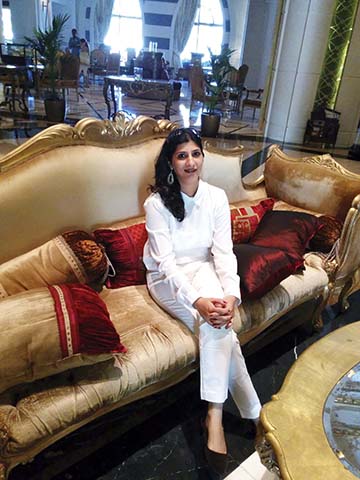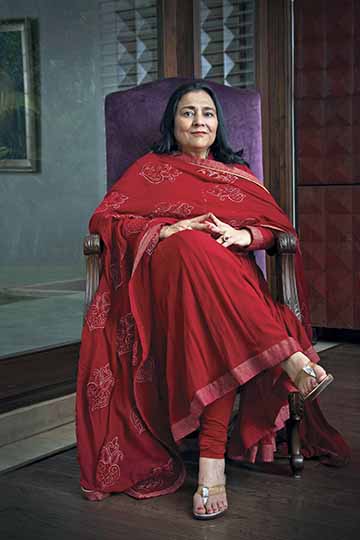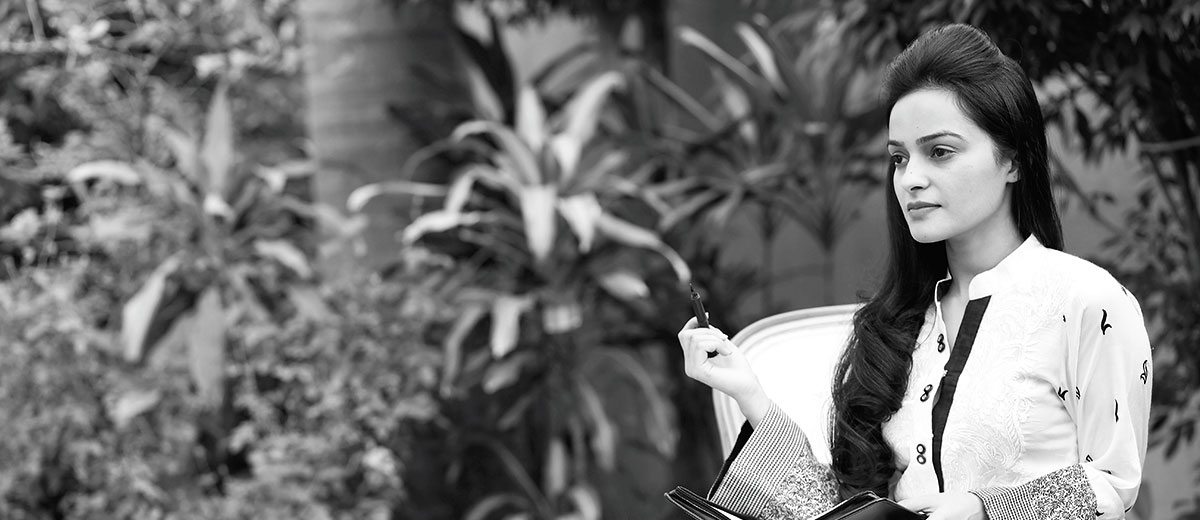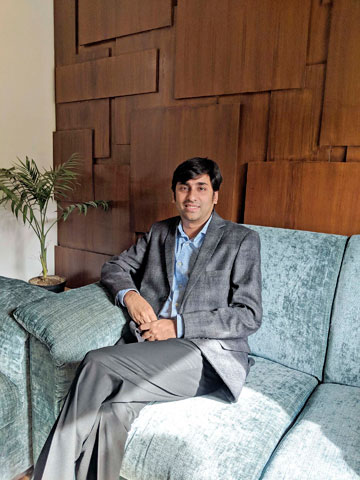
Marwaris and Luxury
Marwaris and Luxury
The highly successful Marwari community has a long tryst with royalty, grandeur and luxury. The values of thrift have not been lost on them either, which have prevented them from being overly indulgent, unlike some other more ostentatious communities. With changing times and evolution of the Marwari mindset, the meaning of luxury has changed, however, giving way to more liberal thinking when it comes to luxury consumption. Dr Sheetal Jain, a Marwari entrepreneur and an internationally published and quoted luxury professional, explores this changing facet of luxury among Marwaris.
The Indian luxury market is mushrooming and counts among the fastest growing in the world. According to an ASSOCHAM study, it is estimated to grow at the rate of 25 percent per annum and reach the $50 billion mark by 2020. This sudden growth can be attributed to the changing Indian mindset and value systems, growing brand awareness among youngsters, multiplying disposable incomes, urbanisation and India’s burgeoning middle-class. Given that Marwaris are considered India’s most opulent community, they could very well become the flag-bearers of the growth of luxury brands in India.
The changing face of luxury
The word ‘Marwari’, in its truest sense, refers to the traders, or the baniya community of Rajasthan. The word ‘Rajasthan’, on the other hand, is etymologically derived from the words ‘raja’ (king) and ‘sthan’ (land), meaning ‘the land of kings’. True enough, Rajasthan is still a land of royals, considering that the royal families of Jaipur, Mewar, Jodhpur, Bikaner, Udaipur and Jaisalmer are still among the popular royal families of Rajasthan. Further, the community’s entrepreneurial success has spawned a penchant for jewellery, luxury cars and other high-end products, with which for decades affluence and luxury have been embedded in the lives of successful Marwari families. Therefore, luxury is not new to Marwaris. What is new is the shift to new forms of luxury.
 Early Marwaris prospered after migrating from their homeland, Marwar (a region in Rajasthan), to distant places like Kolkata, Chennai, Mumbai and other trading hubs of the country, where they set up successful businesses. As they flourished in these places, they became Marwari business strongholds. Initially, it was only the men who moved to these places, but by and by, their families joined them too. Today, these bustling Marwari hubs are witnessing a radical shift from traditional Marwari culture, be it in terms of lifestyle, education or purchase patterns. Conservatism, a key characteristic of Marwaris, has thus paved way to dynamism, innovation and openness, and this in turn has led to a significant transformation in their luxury consumption behaviour. Luxury purchases for older generations of Marwaris were more value-oriented and were restricted to items like jewellery and clothing; but luxury has been taking newer dimensions with changing times and emergence of new generations of Marwaris, especially millennials. The younger lot is taking luxury to greater heights with varied indulgences, thanks to the increased availability of global luxury brands, their exposure to them because of higher instances of overseas travel, social media platforms and changing perceptions about luxury among Indian consumers.
Early Marwaris prospered after migrating from their homeland, Marwar (a region in Rajasthan), to distant places like Kolkata, Chennai, Mumbai and other trading hubs of the country, where they set up successful businesses. As they flourished in these places, they became Marwari business strongholds. Initially, it was only the men who moved to these places, but by and by, their families joined them too. Today, these bustling Marwari hubs are witnessing a radical shift from traditional Marwari culture, be it in terms of lifestyle, education or purchase patterns. Conservatism, a key characteristic of Marwaris, has thus paved way to dynamism, innovation and openness, and this in turn has led to a significant transformation in their luxury consumption behaviour. Luxury purchases for older generations of Marwaris were more value-oriented and were restricted to items like jewellery and clothing; but luxury has been taking newer dimensions with changing times and emergence of new generations of Marwaris, especially millennials. The younger lot is taking luxury to greater heights with varied indulgences, thanks to the increased availability of global luxury brands, their exposure to them because of higher instances of overseas travel, social media platforms and changing perceptions about luxury among Indian consumers.
Marwari women, then and now
A rich part of Rajasthan’s cultural heritage is its alluring jewellery. For years, Marwari women have adorned themselves head to toe with beautiful pieces of jewellery such as borla, nath, rani haar, bajubandh, bangadi, haathphool, tagdi, payal and bichuwa, to name a few. Their world was confined to the household and they had few aspirations in life. With their limited education, exposure and knowledge, luxury for them revolved around possession of expensive jewellery, which not only was seen as the best way to splurge money, but also considered a valuable investment. However, the new-age Marwari woman has transformed radically: she is more independent and confident; she is no more restricted to the household; and she is making her own mark in society. There has been a change in her lifestyle too. Ghagra-odhani, the traditional clothing of Marwari women, has become a rarity and can be seen only during family weddings, and the borla and ghongat are considered passe. The new Marwari woman also is well-educated, well-travelled and well-versed with global trends. She has transitioned from saris to shrugs, from pajab to anklets, and from customary clothing to designer labels. Her wardrobe is no more packed with saris, lehengas and kundan jewellery, but with the perfect mix of western and traditional outfits. Her closet has branded apparel, bags, shoes, sunglasses, perfumes, and a wide gamut of beauty products as well. She wisely chooses the best accoutre for a given occasion and she is no longer hesitant to purchase a Louis Vuitton bag that is worth a lakh of rupees, as she believes in living for the moment and not saving for the rainy day. She lives for the experiential value; she loves to spend money on spas; and she prefers to drive a luxury sedan, rather than buy loads of jewellery. You will be surprised to know that the first Indian woman owner of a Lamborghini (one of the world’s most luxurious sports cars), is a Marwari woman!
Education, then and now
Marwaris have been known for their entrepreneurial acumen and adaptability. They have been risk-takers, great bargainers and venturesome, and as such entrepreneurship has been relentlessly encouraged by the Marwari community. Education, in the bargain, often took a backseat. It has been a long established tradition among Marwaris for sons to join their family businesses as soon as they pass out from school. There prevails a strong belief that starting a business will get you more reverence than a college degree. However, in the last few decades this mindset has changed radically. The younger generation is taking up varied careers like architecture, hotel management, fashion designing, journalism and teaching. They are transforming traditional approaches to business and embracing new-age technologies. Millennial Marwaris are seen to be more receptive, discerning, experimental and are willing to explore the world. They are unrestrained when it comes to indulging in new forms of luxury and see value in spending on lavish cars, vacations, food and watches.
Extravagance, then and now
Think Marwaris, think money! Marwaris are well-known for affluence, traditional lifestyles, conservatism and seek “value for money” when it comes to luxury indulgences. They believe firmly in frugal living and saving and are considered to be among the shrewdest businessmen in the world. A typical Marwari is known for calculating interest before investing. For decades, he has spent generously on gold jewellery, as he sees it as an alternative form of investment; but when it comes to spending the same amount on an art piece or designer handbag (which can also be passed down as legacy to future generations), he will not even give it a thought—this for him is utter waste of money. However, he wouldn’t hesitate to spend lavishly on weddings, as that symbolises his status in society. But with time, this mindset has changed. Young Marwaris are no more confined to spending on just jewellery or weddings. Rather, they are going beyond to attain individuality and for self-gratification. They are moving from external to internalisation of luxury; they are looking for experiences that help them express who they are.
In conclusion, one can say that Marwaris have changed to illustrate a new maturity in their orientation towards consumption of luxury goods and services. Millennials especially have evolved in pace with global trends. Today’s Marwari luxury buyers are driven by classic characteristics of luxury such as rarity, quality, craftsmanship, technology and aesthetics. Homes of affluent Marwais are lavish and are adorned with seamless, exceptional decor. They also have become globetrotters and flaunt luxury brands that range from Manish Malhotra to Michael Kors; from Sabhyasachi to Jimmy Choo; from Mercedes to Porsche… They may still not be as flamboyant as some other communities, but they indeed present a wealth of opportunity to Indian and global luxury brands eyeing growth in the Indian sub-continent.










